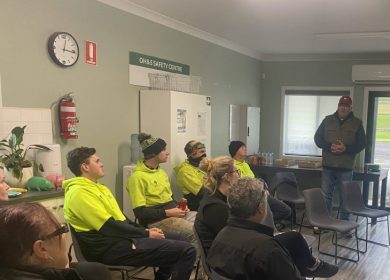
Australia’s diverse ecosystem is facing a significant threat from an invasive species known as fire ants (Solenopsis invicta). Originating from South America, these aggressive ants have made their way to Australia, posing a severe risk to the environment, agriculture, and specifically, the turf industry. This blog will delve into where these ants came from, what they are, why they are a threat to the turf industry, and what can be done to manage their presence.
Where did they come from?
Fire ants are native to South America but have spread to various parts of the world, including the United States, China, and Australia. The ants were first detected in Australia in 2001 in Brisbane, Queensland. It is believed they arrived through cargo shipments. Since their introduction, fire ants have rapidly spread, despite ongoing efforts to contain them. However, they are mainly contained to the southeast Queensland region.
What are Fire Ants?
Fire ants are small, reddish-brown insects known for their aggressive behaviour and painful stings. They build large mound-like nests and are highly resilient, capable of withstanding harsh conditions such as drought or flooding. A single colony can contain up to 250,000 ants, including multiple queens, which allows them to reproduce and expand quickly. These ants are omnivorous, feeding on plants, seeds, and other insects, and are particularly notorious for their impact on native wildlife and human activities.
Why are they a threat to the turf industry?
Fire ants pose a significant threat to the turf industry for several reasons:
- Fire ants can cause considerable damage to turfgrass by building their nests underneath the grass. Their tunnelling disrupts the root systems, leading to poor grass health and unsightly mounds that affect the aesthetic and functional quality of the turf.
- The damage caused by fire ants can lead to significant economic losses. The cost of repairing damaged turf, managing infestations, and the potential decline in the use of affected areas can all contribute to substantial financial burdens on turf managers, turf farmers, and property owners.
- Fire ants also pose a biosecurity risk, limiting the movement of turf between states and even intrastate.
What can be done about them?
Managing fire ants requires a multifaceted approach that includes prevention, monitoring, treatment, and integrated pest management:
Prevention
Strict biosecurity measures are essential to prevent the further spread of fire ants. This includes regulating the movement of soil, plants, and other materials that might harbor ants.
Monitoring Fire Ants
Regular monitoring and surveillance are crucial in detecting fire ant colonies early. Turf managers should routinely inspect their properties for signs of ant activity, such as visible mounds or increased ant presence.
Treatment
Once detected, fire ant colonies can be treated using baiting and chemical treatments. Baiting involves using insecticide-laced bait that worker ants carry back to the colony, effectively killing the queens and disrupting reproduction. Chemical treatments can be applied directly to nests to eliminate ants on contact, as well as turf products to ensure they are treated before moving turf from site to site.
Integrated Pest Management (IPM)
Implementing an IPM strategy that combines prevention, monitoring, and targeted treatments can provide the most effective control over fire ant populations. This approach minimises environmental impact while maximising control efforts.
How does AusGAP mitigate Fire Ants on turf farms?
AusGAP, the industry leader in turf accreditation, plays a pivotal role in mitigating the impact of fire ants on turf farms producing certified turf. Through stringent biosecurity protocols and regular audits, AusGAP ensures that all member farms adhere to best practices in pest management and biosecurity. These practices include comprehensive monitoring programs to detect early signs of infestation and the application of approved treatment methods to manage and control fire ant populations. AusGAP also provides ongoing education and support to certified turf producers, ensuring they are equipped with the latest knowledge and tools to effectively combat these invasive pests. By maintaining high standards and fostering a proactive approach, AusGAP helps safeguard the quality and integrity of turfgrass.
Fire ants are an invasive species with the potential to cause widespread damage to Australia’s unique ecosystem as well as our turf industry. Understanding their origins, behaviour, and the threats they pose is crucial in developing effective management strategies. Through vigilant prevention, monitoring, and treatment, it is possible to mitigate the impact of fire ants and protect the health and integrity of turfgrass across the country. The cooperation of turf managers, homeowners, and regulatory bodies is essential in this ongoing battle to safeguard Australia’s green spaces from this invasive species.


